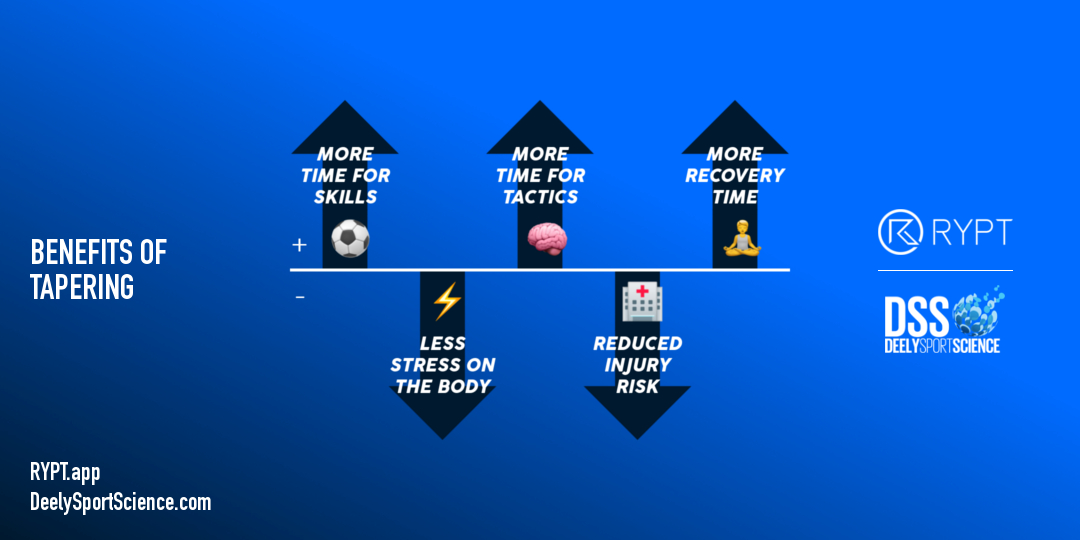
01 Oct Tapering for Sport – By Caoimhe Morris MSc
Tapering for Sport – by Caoimhe Morris MSc
Tapering for match day
The rationale behind tapering is simple: provide the athlete with appropriate recovery prior to performance. Tapering, in simple terms, means reducing the time (duration) and volume (distance or load) of training prior to match, game or competition day. Tapering periods depend heavily on the sport and competition period, however for the purpose of this blog we will speak in relation to field sports such as football and camogie that have competition or ‘peak’ days on a weekly basis in season. Tapering must be planned into the season and must be appropriate to maximise both performance (enough load put on the athlete to meet competition demands) and recovery (from the loads put on the athlete in training and competition).
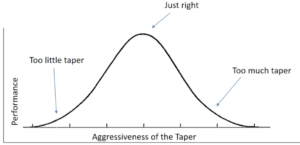
(Reactive Training Systems, 2020)
Reducing the time and volume of training will put less stress on the body, provide more time to work on technical and tactical skills before a performance and provide the system with adequate time to recover from the weeks training. An important note here is that tapering does not mean complete recovery (i.e flaking out on the couch) in place of training, but rather reducing the amount of work a person is doing. On taper day(s), gains in technical, tactical, psychological and reduced load (but high intensity) work can still be made which can make a difference in competition.
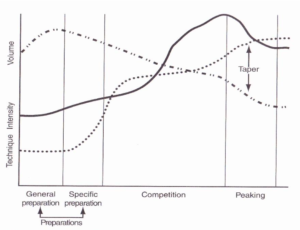
(Plisk & Stone, 2003. “Periodization Strategies”)
Why do we taper?
Tapering is a method used in order to ensure the athlete peaks for performance by ‘reducing the physiological and psychological stress of training (in order to maximise performance after an intense training period)” (Fessi et al, 2016). Tapering and peaking should be planned together in order to optimise performance. This method of structuring work ensures that the athlete will still make and maintain performance gains in season while also ensuring they do not suffer from burnout or overtraining. By planning for recovery around matches we reduce the risk for overtraining, and as a result reduce the risk of injury.
Training allows for recovery from the training plan which leads to increased and/or improved performance.
How do we taper?
Tapering is part of a larger plan of the sport season and so should be structured and planned. The aim of training in any sport is to optimise performance (whether that be with regard to match results, skill performance, tactical performance or a combination of these and more is dependent on the goals of the team). The athletes physiological, psychological, technical and tactical capabilities need to be absolutely optimal for performance which requires they have adequate recovery from training stimulus and load. The function of tapering is of course to reduce load on the body and allow for physiological recovery, but also for psychological recovery. An athlete must also recover psychologically from the stress induced by training, and tapering or reducing that load can improve the players mood, reduce the perception of effort and also increase their perceived readiness to compete.
Guidelines for structuring work in order to peak for competition in team sports is as follows:
- Reduce distance covered and training area size
- Reduce training duration
- Maintain or increase intensity of training
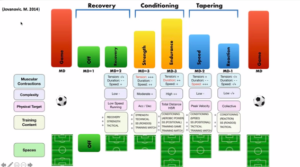
(Javanoic.M, 2014)
An interesting concept called the Fitness/Fatigue relationship is an important consideration when introducing a taper. An athlete must be given the ability to recover from training, but this training must also meet and exceed the physiological demands of the game in order to load the athlete effectively so that they need a period of recovery.
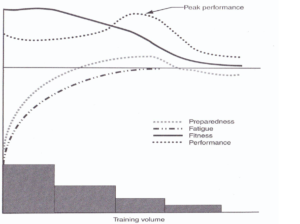
References
Fessi, M.S., Zarrouk, N., Di Salvo, V., Filetti, C., Barker, A.R. and Moalla, W., 2016. Effects of tapering on physical match activities in professional soccer players. Journal of sports sciences, 34(24), pp.2189-2194.
Plisk, S.S. and Stone, M.H., 2003. Periodization strategies. Strength & Conditioning Journal, 25(6), pp.19-37.

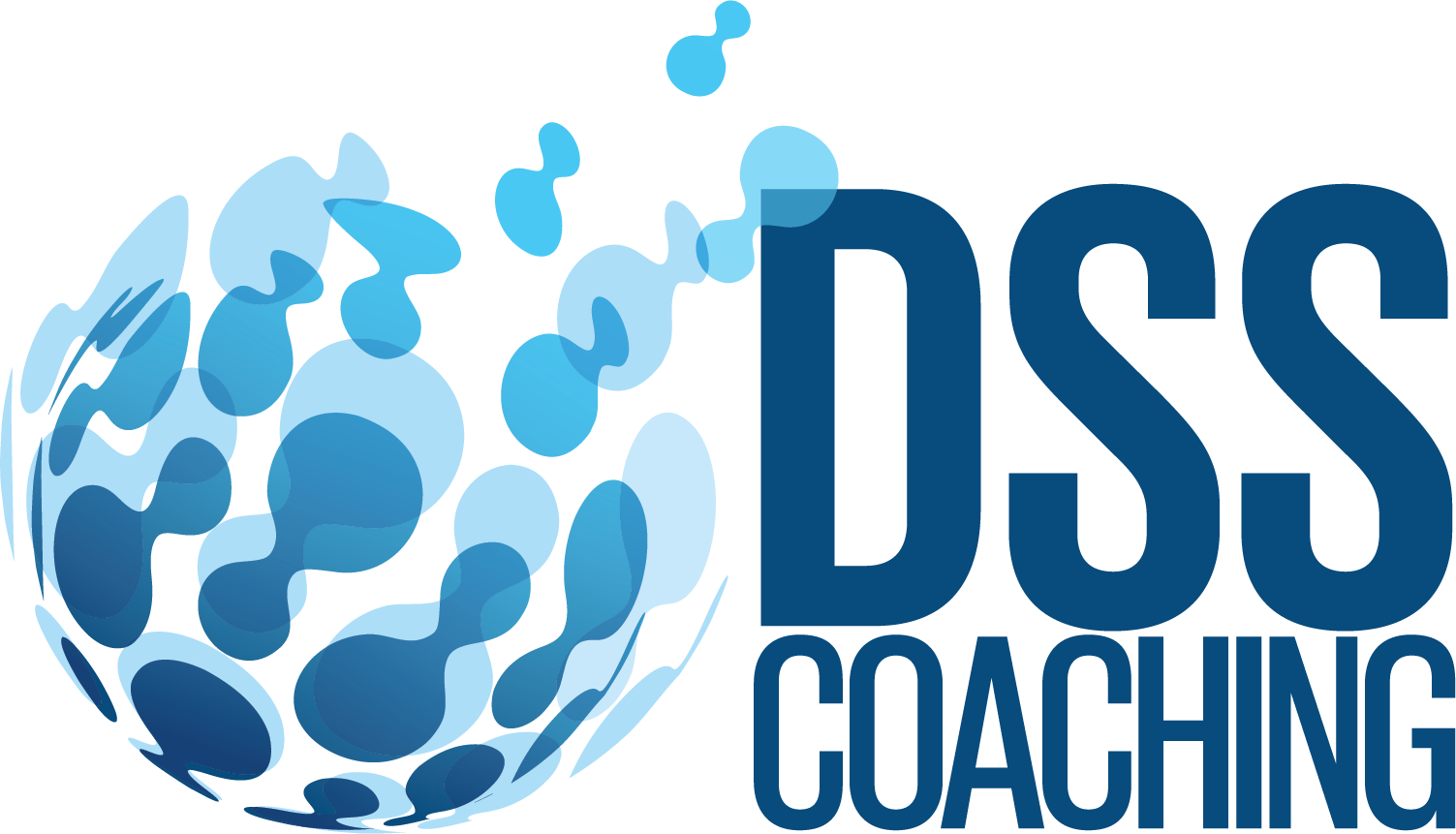

No Comments